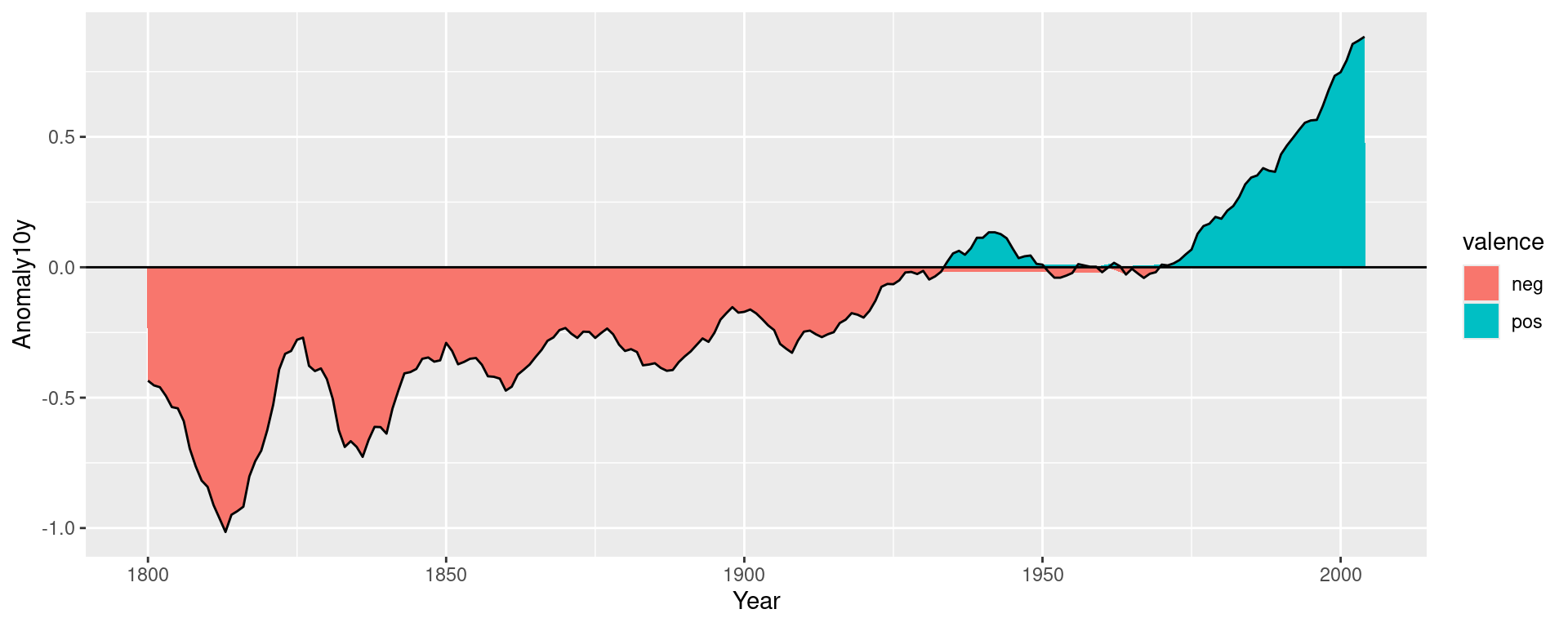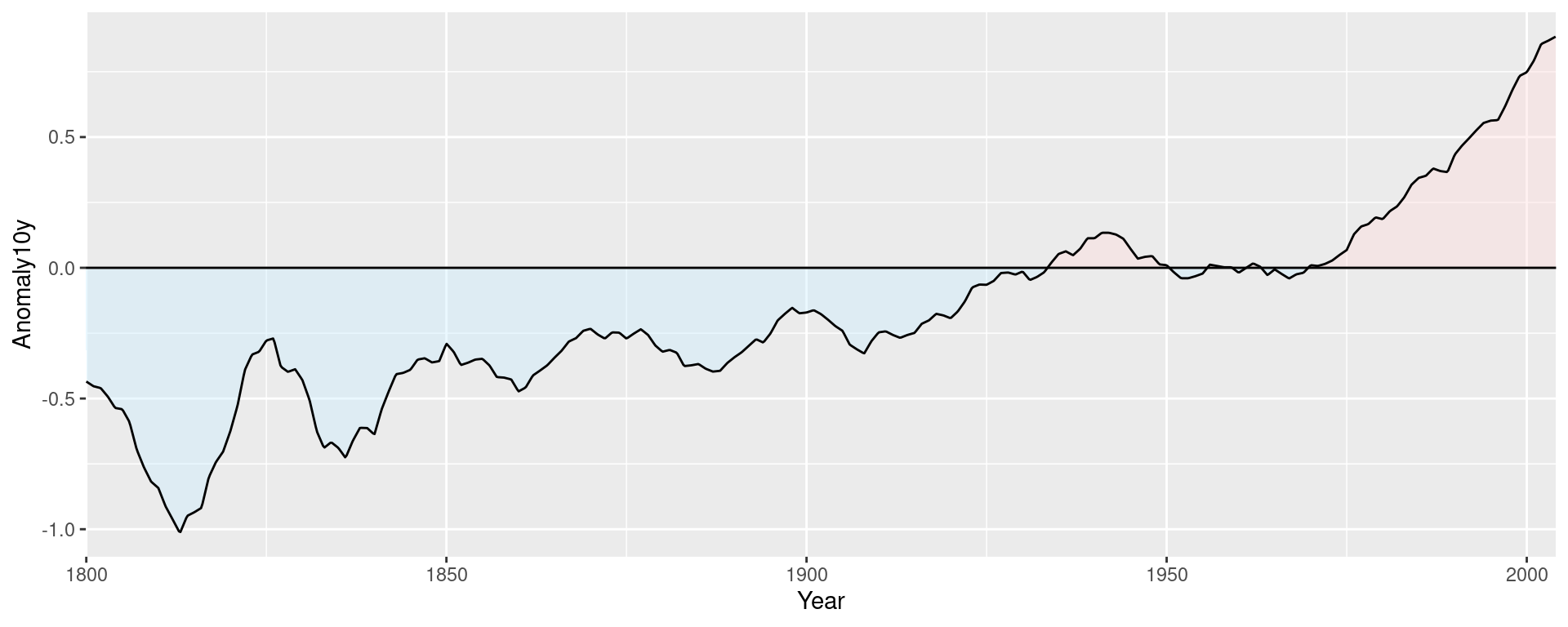12.7 Coloring a Shaded Region Based on Value
12.7.2 Solution
Add a column that categorizes the y values, then map that column to fill. In this example, we’ll first categorize the values as positive or negative:
library(gcookbook) # Load gcookbook for the climate data set
library(dplyr)
climate_mod <- climate %>%
filter(Source == "Berkeley") %>%
mutate(valence = if_else(Anomaly10y >= 0, "pos", "neg"))
climate_mod
#> Source Year Anomaly1y Anomaly5y Anomaly10y Unc10y valence
#> 1 Berkeley 1800 NA NA -0.435 0.505 neg
#> 2 Berkeley 1801 NA NA -0.453 0.493 neg
#> 3 Berkeley 1802 NA NA -0.460 0.486 neg
#> ...<199 more rows>...
#> 203 Berkeley 2002 NA NA 0.856 0.028 pos
#> 204 Berkeley 2003 NA NA 0.869 0.028 pos
#> 205 Berkeley 2004 NA NA 0.884 0.029 posOnce we’ve categorized the values as positive or negative, we can make the plot, mapping valence to the fill color, as shown in Figure 12.13:
ggplot(climate_mod, aes(x = Year, y = Anomaly10y)) +
geom_area(aes(fill = valence)) +
geom_line() +
geom_hline(yintercept = 0)
Figure 12.13: Mapping valence to fill color-notice the red area under the zero line around 1950
12.7.3 Discussion
If you look closely at the figure, you’ll notice that there are some stray shaded areas near the zero line. This is because each of the two colored areas is a single polygon bounded by the data points, and the data points are not actually at zero. To solve this problem, we can interpolate the data to 1,000 points by using approx():
# approx() returns a list with x and y vectors
interp <- approx(climate_mod$Year, climate_mod$Anomaly10y, n = 1000)
# Put in a data frame and recalculate valence
cbi <- data.frame(Year = interp$x, Anomaly10y = interp$y) %>%
mutate(valence = if_else(Anomaly10y >= 0, "pos", "neg"))It would be more precise (and more complicated) to interpolate exactly where the line crosses zero, but approx() works fine for the purposes here.
Now we can plot the interpolated data (Figure 12.14). This time we’ll make a few adjustments – we’ll make the shaded regions partially transparent, change the colors, remove the legend, and remove the padding on the left and right sides:
ggplot(cbi, aes(x = Year, y = Anomaly10y)) +
geom_area(aes(fill = valence), alpha = .4) +
geom_line() +
geom_hline(yintercept = 0) +
scale_fill_manual(values = c("#CCEEFF", "#FFDDDD"), guide = FALSE) +
scale_x_continuous(expand = c(0, 0))
Figure 12.14: Shaded regions with interpolated data